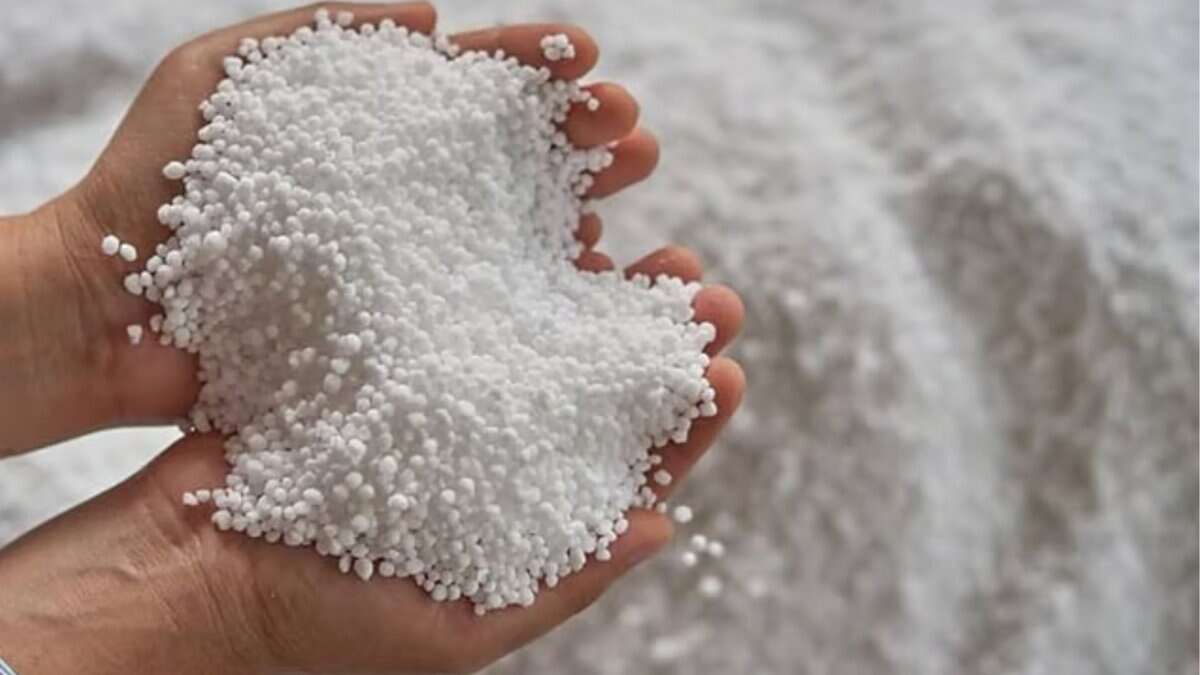
Hyderabad: The farmers across Telangana are suffering due to a shortage of urea in the present Kharif season, the evidence of which, could be seen in the long queues in front of the Primary Agricultural Cooperative Societies (PACS) in the state.
The shortage is more visible in the undivided Khammam district, where 50 percent of the farmers have gone for seed broadcasting method for sowing paddy earlier than other regions, expecting early monsoons this year.
Though the farmers’ organisations are pointing their fingers at the Centre, for reducing the supply of fertilisers this Kharif season, there are more dimensions to the problem.
Shortage of 2 lakh tonne urea in Kharif
According to Ramesh Madineni, state vice-president of All India Kisan Sabha (AIKS), Telangana needs 8.5 lakh tonne urea for Kharif season, but this year only 6.5 lakh tonne has been allocated, the supply of which is being delayed.
According to him, urea is supplied 50 percent to PACS through Markfed, and 50 percent to private dealers in the state. The subsidy of around Rs 1,500 per 45 kg bag is being given by the Centre to farmers buying it from PACS, which would put the cost per bag at Rs 265. On the other hand, there is no subsidy for urea being sold through the private dealers.
The condition imposed on private fertiliser dealers
He tells Siasat.com that this year, the private dealers are being given other slow-moving fertilisers to sell, as a condition for supplying them urea by fertiliser companies.
This means, for example, for supplying a lorry-load of urea, they are being asked to sell other fertilisers which don’t have demand. In Khammam, the private dealers had resolved not to sell urea if such condition was imposed on them. However, the district agricultural officer had held talks with the dealers and convinced them to keep the sale going.
The long queues at PACS
When it comes to supply in PACS, he says that this year there is a cap of only 2 bags of urea being sold per passbook to farmers. As 1 bag of urea is consumed per acre, it affects the medium and big farmers owning 5 or 10 acres.
“There are over 1,000 farmers standing in long queues in front of PACS, while there are only 500 bags available. Farmers are losing a complete day of their labour while waiting in the queues as long as half a kilometre. The problem is being exacerbated as even those who don’t need urea are standing in queues ,” he claimed.
“Ten years ago, one PACS used to serve a village, but presently each PACS is handling as many as 10 villages, which is causing the rush especially when there is a shortage of urea,” he observes.
Bonthu Rambabu, state joint secretary of Telangana Rythu Sangham, tells Siasat.com that since it is July 26, which is already late for delivering urea, the farmers would have to wait for the next purchase of urea till August 26.
Centre wants farmers to transition towards nano urea
The farmers’ organisations are suspecting that the shortage of urea from the Centre is being driven by it’s plan to promote the sale or nano urea in the open market, as an alternative to the regular urea.
“BJP MP Konda Vishweshwar Reddy too had recently said that reducing paddy production and use of urea is the Centre’s policy. His statement is giving credence to our suspicion,” he pointed out.
Tenant farmers and tribals suffering the most
Those facing the most difficult situation are tribals and tenant farmers who form a large majority in the erstwhile Khammam district.
Rambabu says that aadhar card, patta passbook xerox copies and biometric authorisation of the farmers being asked at PACS has become a major hurdle for these marginalised farmers in securing the subsidised urea.
“For instance, there are many NRIs and employees who are not cultivating their lands. When the tenant farmers who leased their lands go to PACS for urea, a one-time password will be sent to the pattadar who may not receive it because of being abroad, and even if they do, they may not be available,” he notes.
“Most of the tribals in the agency areas don’t have passbooks. So they won’t be able to avail the subsidised urea, and would have to depend on private dealers for fertilisers, incurring high input costs,” he adds.
The shortage or urea is more in Chintakani, Wyra, Kalluru, Yellandu, Tekulapalli and Sattupalli mandals in the erstwhile Khammam district.
Nano versus regular urea
On why the farmers in the Khammam region who were progressively moving ahead with seed broadcasting method of paddy sowing were not showing much interest in transitioning towards nano urea, Rambabu says that though the rate on nano urea costing Rs 250 per 0.5 litre bottle may appear as equivalent to a subsidised bag of urea costing Rs 265- there is a catch.
He observes that while one person is needed to apply urea in an acre of land, it would need three persons to do the same job while using nano urea, as it would require mixing the nano urea in water, which implies water needs to be carried by someone, mixed, and sprayed using a pump- which is labour intensive.
“Most of the farmers in this region are used to brands like Nagarjuna urea and Godavari DAP. They are yet to see any benefit from nano urea,” he opines.
Ramesh points out that especially during the rains, regular urea is more effective, as it uniformly spreads and enters the roots of the crop aiding their growth, whereas the nano urea applied to the plant gets washed away if it rains.
Farmers’ organisations in the erstwhile Khammam and across the state have been representing to their respective district agricultural officers to speed-up supply of urea for the past month, and also to relax the mandatory requirement for biometric, aadhar and passbook of farmers to purchase urea at PACS.
No urea shortage, says Deputy CM Bhatti Vikramarka
During a review meeting on the prevailing flood situation, providing emergency infrastructure in place, and the implementation of welfare schemes with Khammam and Bhadradri-Kothagudem district officials on Sunday, July 27, the deputy chief minister Bhatti Vikramarka asserted that there was no shortage of urea in the state.
He also said that the floods in the Godavari River were normal, and that no alert has been issued till now.




